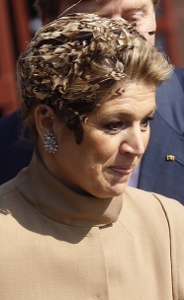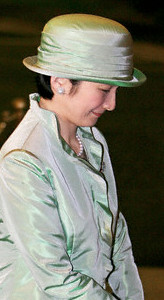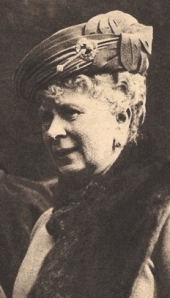
After receiving a number inquires about Crown Princess Mary’s hat yesterday, I thought it was time for a closer look at the rarely seen casque hat.
History: During the 15th and 16th centuries, royal and noble men donned ornately decorated helmets (usually without a visor) called “casques” for protection in battle. When the calot hat came into fashion for women in the 1920s, a variation of this style spun off- calot hats were closely fitting caps perched on the back of the wearer’s head but this new variation wrapped around the head to frame the wearer’s face. As the style resembles a sort of feminine helmet, it became known as the casque. Casques resurged in popularity during the 1950s.
Characteristics: A close fitting cap or helmet that extends from the back of the head to frame the wearer’s face. Often trimmed with feathers or leaves, casques have no visor or brim.
Royals Associated with this Hat Style: Princesses in the 1950s. We seldom see this hat shape on royals today.
Royal Casques (and variations on a casque):




Queen Elizabeth, October 19, 1957; Princess Máxima in Fabienne Delvigne, April 30, 2009;
Crown Princess Mary, September 17, 2014; Princess Tessy, June 23, 2013
Princess Margarita, June 16, 2012; Princess Margaret, June 17, 1952;
Queen Elizabeth, The Queen Mother in 1969; Princess Beatrix in 1958
Princess Maxima in Fabienne Delvigne, April 15, 2011; Queen Mathilde in Fabienne Delvigne, Oct 11, 2016;
Queen Elizabeth, Queen Elizabeth in 1963; Princess Clotilde of Savoy, May 22, 2004
I am afraid that the casque hat is not on my list of favourite hat styles (and is not likely to be added). It is very difficult to wear such a close fitting hat without looking like one is wearing a helmet, although I do concede that the way the casque frames a royal face can be very pretty. What do you think of the casque hat style for royal millinery?
Photos from Bettman via Corbis, Julian Parker and Sonia Recchia via Getty; Albert Nieboer via Corbis; Patrick van Katwijk via Monarchy Press; Getty Images; Joan Williams via The Daily Mail; Keystone/Stringer via Getty; Patrick van Katwijk via Dutch Photo Press; Photonews,via Getty; Press Association via The Daily Mail; and Getty Images/Stringer












































































